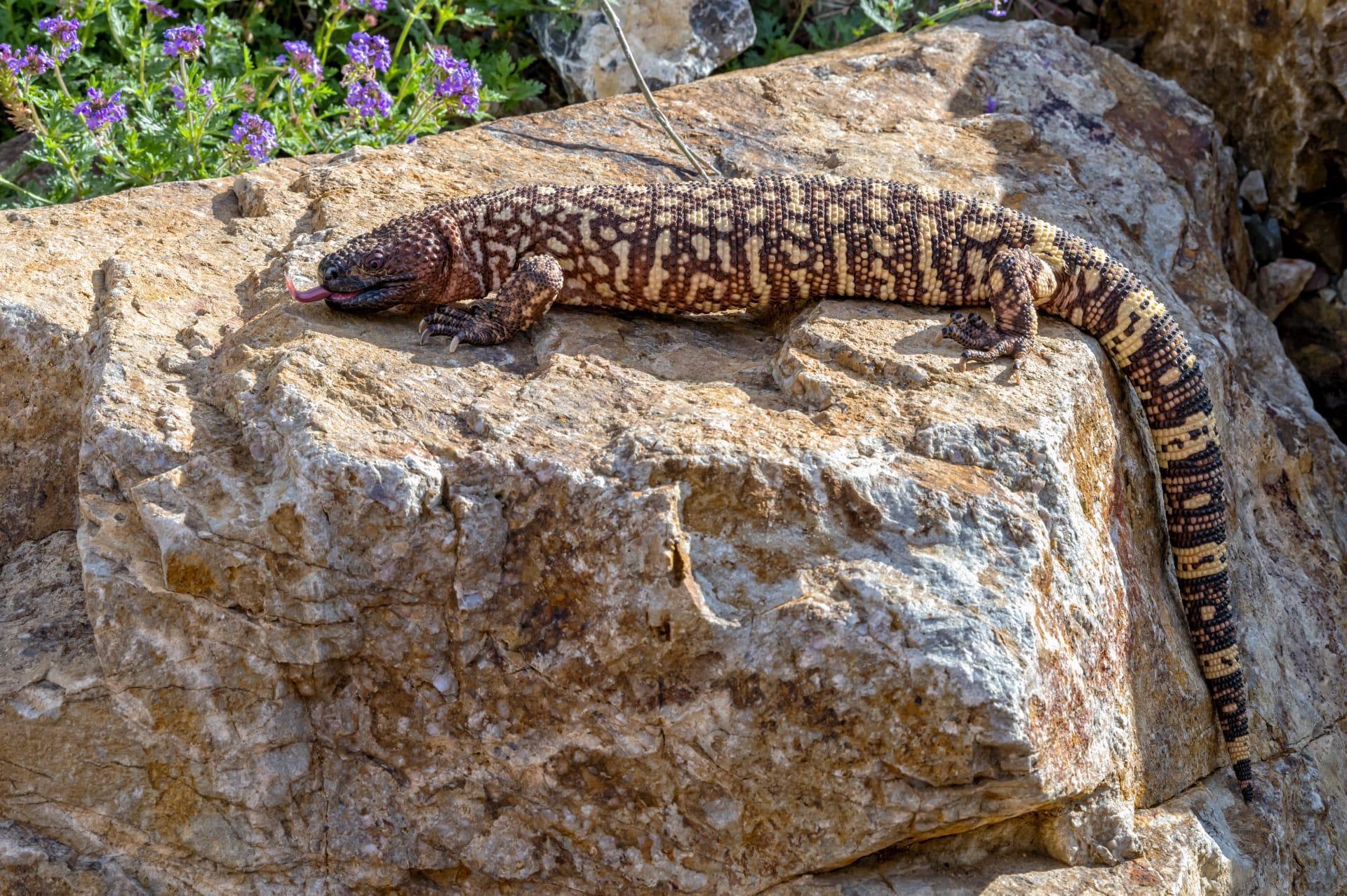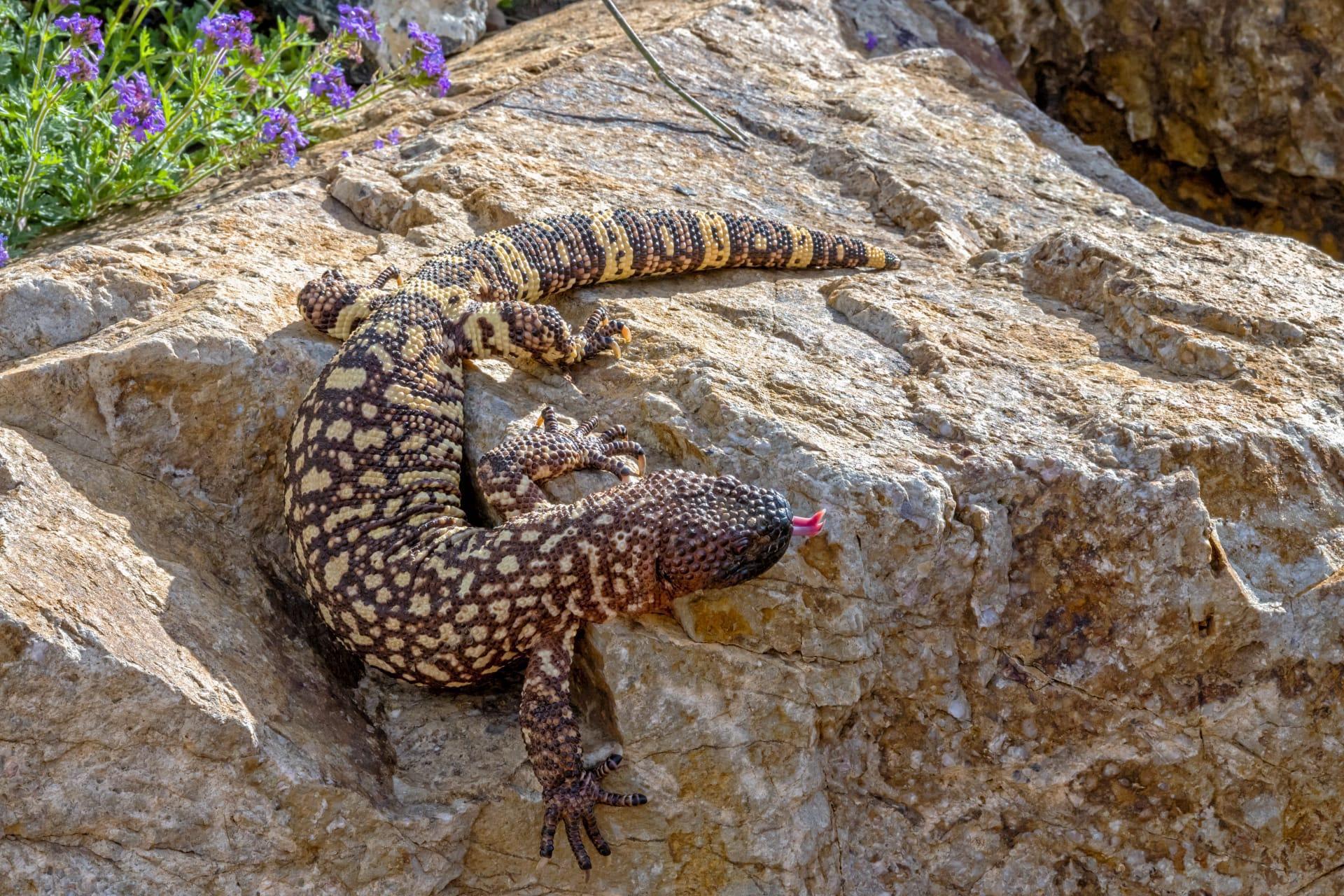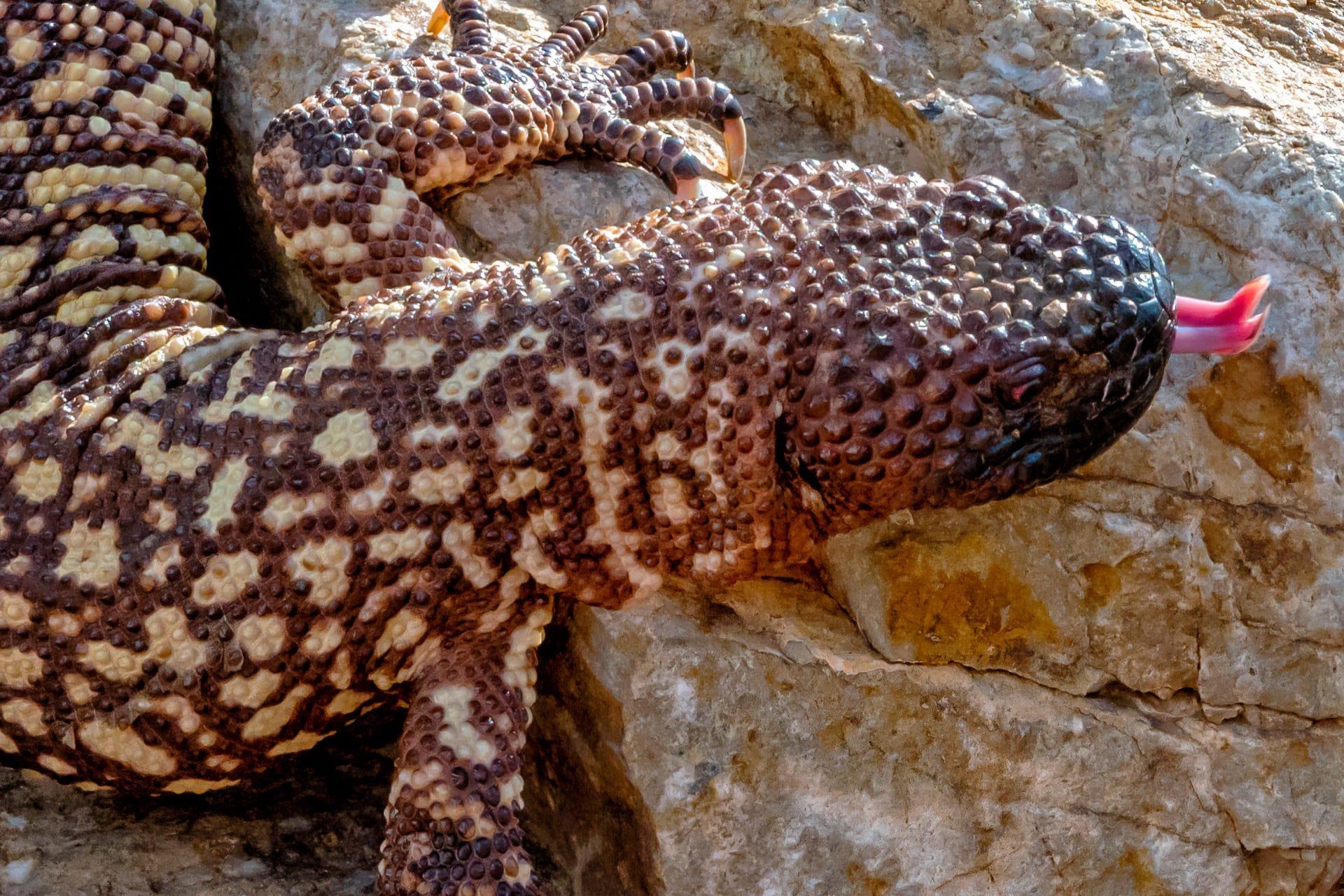Mexican Beaded Lizard Characteristics
- Home /
- Mini Encyclopedia /
- Animal /
- Mexican Beaded Lizard Characteristics
1
The Mexican Beaded Lizard, a fascinating creature from the reptile family, boasts an impressive physique. Adults typically reach a length of about 24 to 36 inches, including the tail. Their robust bodies are covered in a distinctive skin, textured with bead-like scales, giving them a unique, rugged appearance. These lizards have a remarkable lifespan, often living up to 20 years in the wild and potentially exceeding 30 years in captivity. This longevity is quite exceptional among reptiles.
One of the most intriguing aspects of the Mexican Beaded Lizard is its venomous bite. Unlike most lizards, this species has venom glands located in its lower jaw. When it bites, the venom flows along grooves in the lizard's teeth, delivering the toxin to its prey or predator. This venom is not typically lethal to humans but can cause significant pain and swelling. The lizard uses its venom primarily for defense and to subdue small prey, such as birds and rodents.

2
Question: Why is the Mexican Beaded Lizard often mistaken for a non-venomous species?
Answer: The Mexican Beaded Lizard is frequently mistaken for non-venomous due to its physical resemblance to other, harmless lizards. Its bead-like scales and general body structure are similar to several non-venomous species. Additionally, its behavior of being less aggressive and often motionless makes it less conspicuous as a venomous creature. This confusion can lead to dangerous encounters if the lizard is provoked or mishandled, assuming it's harmless.

3
The Mexican Beaded Lizard exhibits a fascinating range of movement characteristics. It is not a particularly fast mover; instead, it relies on stealth and patience to approach its prey or explore its territory. Its movement is often described as deliberate and calculated, helping it conserve energy in its hot, arid habitat.
In terms of hunting and feeding, the Mexican Beaded Lizard displays remarkable adaptability. It primarily feeds at night, making it a nocturnal predator. Its diet consists mainly of small mammals, eggs, birds, and insects. The lizard's venomous bite is a key tool in subduing larger or more aggressive prey, immobilizing them quickly. This lizard also has a strong sense of smell, which it uses to track down food, often digging through soil or under rocks to find its next meal.

4
The Mexican Beaded Lizard inhabits a specific range of environments, predominantly found in Mexico and some parts of Central America. It thrives in arid and semi-arid regions, including scrublands, rocky areas, and tropical deciduous forests. These habitats provide the necessary cover and temperature regulation for the lizard's survival. The availability of burrows and crevices is crucial for its daily and seasonal thermoregulation.
Reproduction in the Mexican Beaded Lizard is a fascinating process. They are oviparous, meaning they lay eggs rather than giving birth to live young. The breeding season usually occurs in the spring, with females laying between 2 to 12 eggs in a burrow or a safe, hidden place. These eggs incubate for several months, with the young lizards hatching fully independent, ready to fend for themselves.

5
Book: "Reptiles of Central America: Unveiling the Mysteries" - This book, published in the USA in the early 2000s, offers a comprehensive overview of Central American reptiles, including the Mexican Beaded Lizard. Authored by renowned herpetologist Dr. James R. Dixon, it delves into the habitat, behavior, and conservation of these fascinating creatures, with a special focus on the Mexican Beaded Lizard's unique characteristics and adaptation strategies.
Book: "Venomous Reptiles of the Western Hemisphere" - Compiled by Jonathan A. Campbell and William W. Lamar, this two-volume set, published in the USA in the late 1990s, is an extensive resource on venomous reptiles. It covers a wide range of species, including an in-depth look at the Mexican Beaded Lizard. The book discusses the lizard's venom, its ecological role, and its interactions with humans, providing a thorough insight into this intriguing species.